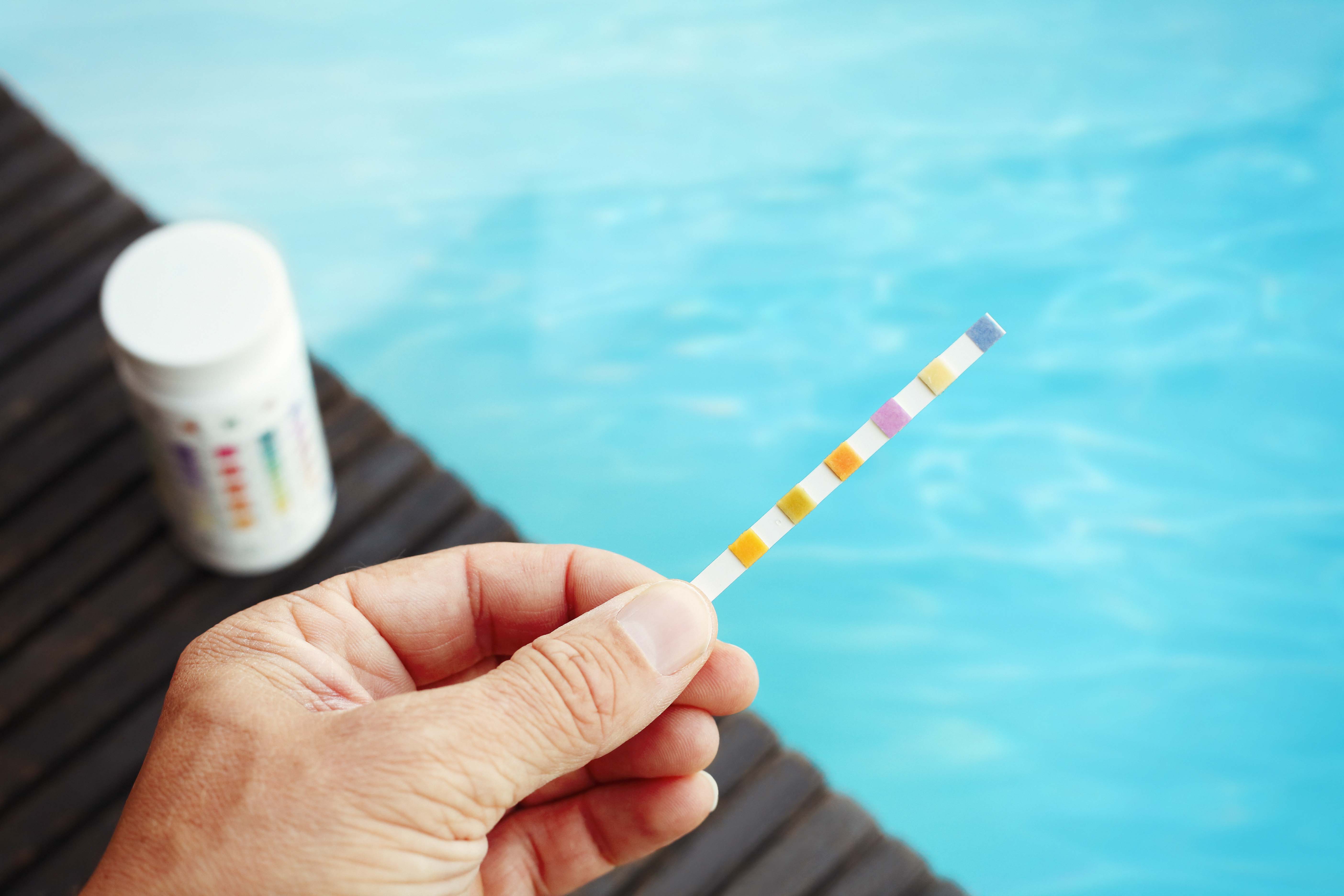Water Testing Explained
When you think of chemistry, images of bunsen burners, beakers, and white coat-clad scientists likely spring to mind. While this may be far from your area of expertise, there’s one type of chemistry that all pool owners will inevitably need to familiarise themselves with - water chemistry.
Keeping your pool within strict pH and chlorine parameters is key to ensuring the water not only looks inviting, but stays healthy and pathogen-free long term. Thankfully, you don’t need a PhD to determine the composition of yours, in fact, you can do so at home quickly, easily, and cheaply.

Methods of Water Testing
There are two main methods for self-testing the chemical makeup of your pool - liquid testing and strip testing.
Liquid Testing - As the name suggests, liquid testing involves collecting a sample of your pool water and exposing it to various pre-packaged liquids to see how it responds.
The ‘reagents’ used by these kits react with your water sample to produce a specific colour. By matching this colour to the included chart, you can determine the chemicals that are present in your pool, and their concentrations.
These tests can be very accurate when performed correctly, though are quite time-consuming and complex relative to the other options available to consumers. They also demand a strict adherence to the test technique, with too few or too many drops of the reagent resulting in inaccurate readings.
Testing Strips - Developed more recently than liquid testing, testing strips allow you to analyse multiple facets of your pool’s chemical composition in one fell swoop.
To use them, you simply need to dunk the strip into the water to be tested, keep it submerged for a few seconds, then remove it. Each pad on the testing strip will change to a different shade, which you can then match to a colour chart.
While they’re certainly not infallible - mishandling of the product can cause the pads to become contaminated and produce a false reading - their ease of use means owners are encouraged to frequently check their pool’s chemistry.
What To Test For
Regardless of whether you opt for the liquid or strip variety, your test should ideally produce a measurement of the following:
Total Hardness - ‘Hardness’ refers to the amount of dissolved magnesium and calcium in the water.
When the water is too ‘soft’ (i.e. lacking in the aforementioned minerals) it can become corrosive to metals, plaster, tile grouting, and your pool accessories. It may also stain the walls and floor of your pool.
When the water is too hard, it can contribute to scaling on vital components such as the pipes, filter, and plumbing. In severe cases, hard water can appear cloudy, and cause irritation for swimmers’ eyes.
Total Chlorine - Total chlorine is the sum of the chlorine that is free (i.e. able to sanitise contaminants), and the combined chlorine (chlorine that is already bound to contaminants or other compounds, such as sunscreen).
Having too much total chlorine in your pool is associated with a number of nasty effects on swimmers - namely lung, skin, and eye irritation. This is because it lowers the pH of your pool’s water, making it more acidic.
Too little chlorine can also lead to ill health. Without enough, your pool can easily harbour bacteria, pathogens, and algae - all of which pose serious risks.
Free Chlorine - Free chlorine is the amount that is available to neutralise harmful microbes.
pH - pH represents the acidity of a body of water. It uses a scale of 0 - 14, with a lower figure denoting greater acidity, and a higher figure indicating a more alkaline environment. The ideal range for your pool is right in the middle, with even a one point difference in either direction able to cause major issues.
Whichever way it deviates, an unbalanced pool can sting the eyes and nasal passages of users, and leave their hair dry, itchy, and brittle. It also causes water clouding, and has the potential to damage vinyl liners, mechanical systems, ladders, slides, and other accessories.
Alkalinity - Alkalinity refers to the total concentration of dissolved alkaline substances (such as carbonates and bicarbonates). Though there is a general correlation to the pH level, it’s not a one to one relationship.
When your pool’s alkalinity is too low, any chemicals that are added to the water will disproportionately affect its pH, resulting in what’s known as ‘pH bounce’. When it’s too high, it can minimise the effectiveness of chlorine.
How To Find a Quality Test
If you’re after a simple, affordable means of determining the above values, Pool Set’s Water Test Strips are the perfect choice. With 50 pieces per pack, they allow you to frequently check your pool or spa, and each strip is sealed in a contamination-proof foil seal to ensure reliability.
Find out more here, or visit our blog for more information about caring for your pool.
The information provided by the Poolset website must not be relied upon or regarded as a substitute for specific professional advice. We make no claim that the website is 100% accurate or suitable for an individual's unique circumstance and provide the website on the basis that all persons accessing the website responsibly assess the relevance and accuracy of its content.



